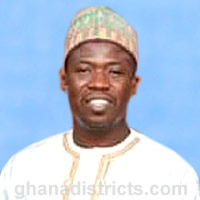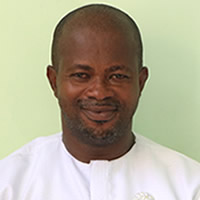Population Growth
The 2010 National Population and Housing Census put the Municipality’s population at 143,314 with an annual growth rate of 3.6%. The projected population for the year 2013 is therefore 154,437. The estimated population for 2013 is by the MPCU.
The population of the municipality is about 49.9% male and 50.1% female. There are about 52communities in the municipality with Sowutuom, as the capital. The population is concentrated mainly along the urban and peri-urban areas of the municipality.
Age-Sex Characteristics
The age-sex structure of GCMA is influenced by factors, which contributes to population increases generally. These factors include natural birth rate, migration, mortality rate, socio-economic activities, etc. The female population as at 2010 was estimated to be 58,911 (50.1%), while the male population was 58,675 (49.9%).
About 42% of the population falls within the economic active range between 15 and 49. Hence, there is the need to institute development programmes to provide employment to engage the youth in sustainable economic ventures.
Age Cohort | Males | Females | Total Population | |||
Absolute | % | Absolute | % | Absolute | % | |
0-14 | 22,651 | 48 | 24,623 | 52 | 47,274 | 31.1 |
15 – 64 | 50,083 | 49 | 52,168 | 51 | 102,251 | 65.8 |
65 + | 2,505 | 51 | 2,407 | 49 | 4,912 | 3.1 |
Total | 75,239 | 48.75 | 79,198 | 51.25 | 154,437 | 100 |
Source: MPCU 2014
Rural-Urban Population
The urban population constitutes 76.04% of the Municipality’s total population with 23.96% residing in the peri-urbansettlements.
Population Projections
The population of the Municipality is projected throughout the planned period. The Municipality has population of 143,314 by the National census and housing conducted in 2010. At a growth rate of 3.6, the population is estimated to be 169,394 in 2014. By the year 2017, the population of the Municipality is estimated to be 181,108, which the sex disaggregated will 51% (90,916) and male 49% (90,192).
Table 1.8: Projected Population sizes of the Nine (9) Electoral Areas from 2010 – 2017.
Population Density
GCMA is the second smallest district, in terms of land size, after Ashiaman Municipal Assembly in Greater Accra Region. It has a land size area of about 86 square kilometers. The estimated population density in 2010 was 1,666 persons per sq. km. This is expected to increase to 2,106 persons per sq. km by the year 2017. This indicates that the Municipality is densely populated.
The socio-economic implications are that the Municipality may be having more people to pay tolls and levies as a result of commercial activities which might spring up. However, there might be inadequate of land for farming and other industrial establishment as well as residential accommodation which might promote slum development. Overconcentration of population also promotessocial vices and encourages criminal activities.
The Assembly will have to increase its security measures to combat the social vices and crime that might crop up.
The table below depicts the density of persons per square kilometers from 2010 to 2017.
Household Characteristics
A household by the 2010 census report defines it “a person or group of persons who live together in the same house or compound, share same house keeping arrangement and are catered for as one unit”. The 2000 population census estimates a total of 15,001 households for GCMA with an average household size of 7.8 which is far higher than national average of 5.3. However the poverty level in the Municipality makes high for average family to manage therefore the need to encourage family planning to maintain or reduce to low household size.
Occupation
The most common occupation in the Municipality is commerce and trading. This is obvious that almost all houses have a kind of either shop built–in or structure / ‘table’ in front trading. Other activities include block making, dress making, mechanic garage, hawking, etc. The Municipality has 3 vibrant open markets where food stuff is found. Agriculture is on a small scale.
Spatial Analysis
Physical Development Planning
The structural layout of the Municipality was never planned. Most of the ‘lands’ of the Municipality were sold out without planning scheme and people then built as they felt.In addition to this the administration of this area, now a Municipality, was neglected by the previous planning authority which were in-charge of this area. In 1970s GCMA area was under Tema City Council / District, and then it came under Ga District Assembly and then Ga South Municipal Assembly. It is estimated the about 90% of buildings in the Municipality were put up without permit. Land litigation of land ownership, most of which are in court for interpretation and judgment. This has resulted in several physical developmental problems. i.e.
1. Building without development permits
2. Multiple land sale
3. Use of land-guards to protect people and community opinion leaders’ interests.
4. Acquisition of land title problem.
5. Encroachment on road reservation and government land.
The table 1.7 below shows that the“unplanned”and “partially planned”areas are the majority communities within the Municipality, where as none of communities falls under planned areas.
Table 1.10: Planned and Unplanned Communities in the Municipality
ZONAL COUNCILS | COMMUNITY | ZONING STATUS | ||
PLANNED | PARTIALLY PLANNED | UNPLANNED | ||
Anyaa | Sowutuom |
| X |
|
Awoshie |
| X |
| |
Anyaa |
| X |
| |
Santa Maria |
| X |
| |
Ablekuma |
| X |
| |
Olebu |
|
| X | |
Chantan | Tabora |
|
| X |
Chantan |
| X |
| |
Lomnava |
|
| X | |
There are about 53 communities in the Ga Central Municipal Assembly. Distributions of these communities are informal and unplanned settlements mainly nucleus. Most of the communities are devoid of planning scheme and therefore lack well designed road networks. About 70% are urbanized but lack basic services for life. The Municipality serves as “dormitories” for residents who commune to and from the Municipality to Accra for their livelihood.
Settlement Hierarchy
The Municipality has nine main urban centers. The table below shows all the nine communities. The busiest is Tabora due to its commercial activities. The hierarchy of order of commercial activities is arranged in the table below:
Table 1.11 Hierarchies of Settlements
Hierarchy By Commercial Activities | Electoral Areas |
1st 2nd 3rd 4th 5th 6th | Tabora Anyaa Santa Maria, Awoshie, Lomnava Chantan, Kwashiebu Sowutuom Ablekuma. |
Source: MPCU, 2014
The analysis from the above table and the Scalogram below reveals that the Municipality is deprived of social amenities making the communities poor as compare to AMA. The poverty thus serves as a limitation to development and account for the high rate of land-guards and the associated robbery incidence in the Municipality.
Spatial Distribution and Access to Essential Services
The Municipality is polarized into urban, and peri-urban settlement. The Municipality has 1st class roads (the N1 and Awoshie – Pokuase roads), 2nd class road (Kwashieman – Ofankor road) and other link roads, street and lanes. These roads, streets and lanes links both the Urban and the Peri-urban communities. The major urban centers include Sowutuom, Santa Maria, Awoshie, etc whereas peri-urban settlements are Ablekuma, Anyaa, etc. Most peri-urbans are fast developing into urban settlements. There are limited accesses to socio-economic facilities within the peri-urban centres.
The table below shows the distribution of key social amenities and infrastructure / facilities in the in the nine (9) electoral areas of the Assembly. The import is that table shows uneven distribution of these infrastructural facilities in the Municipality.
Table 1.12: Electoral (Zonal) Areas in the Municipality
Name | Health Facilities (Private) | Postal Services | Banking Facilities | Police Station | Developed Market Centres | Public Schools (All levels) |
Lomnava | 0 | 0 | 1 | 1 | 0 | 0 |
Awoshie | 4 | 0 |
| 0 | 0 | 3 |
Anyaa | 4 | 0 | 3 | 1 | 1 | 3 |
Chantan | 0 | 0 | 0 | 0 | 1 | 1 |
Sowutuom | 2 | 0 | 1 | 1 | 0 | 0 |
Santa Maria | 3 | 0 | 2 | 0 | 0 | 0 |
Tabora | 0 | 0 | 3 | 0 | 0 | 1 |
Kwashiebu | 0 | 0 | 0 | 0 | 0 | 0 |
Ablekuma/Olebu | 0 | 0 | 0 | 1 | 0 | 3 |
Date Created : 11/17/2017 8:16:07 AM






 facebook
facebook twitter
twitter Youtube
Youtube TOLL FREE 0800 430 430
TOLL FREE 0800 430 430 +233 593 831 280
+233 593 831 280 GPS: GE-231-4383
GPS: GE-231-4383 info@ghanadistricts.com
info@ghanadistricts.com Box GP1044, Accra, Ghana
Box GP1044, Accra, Ghana